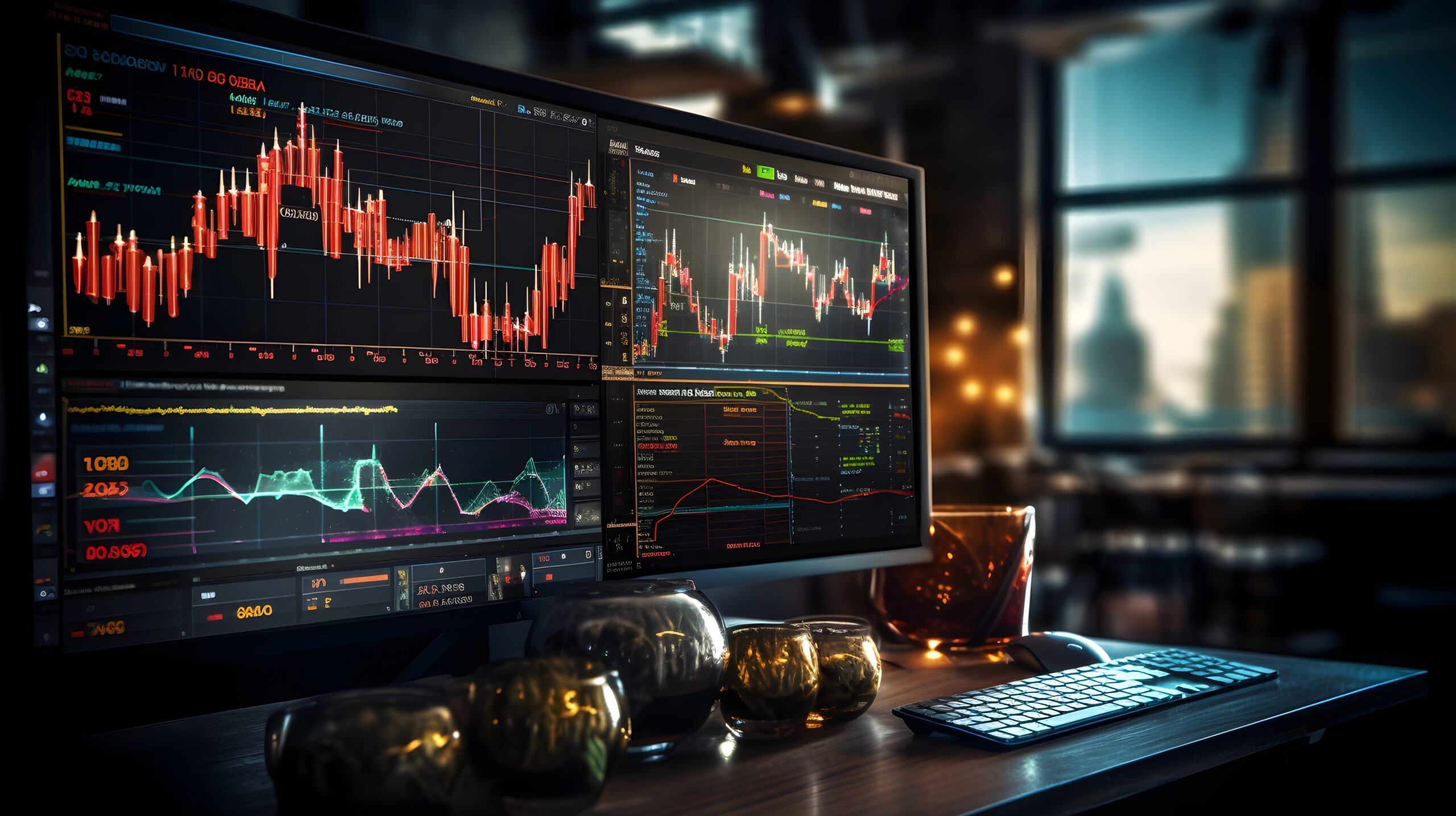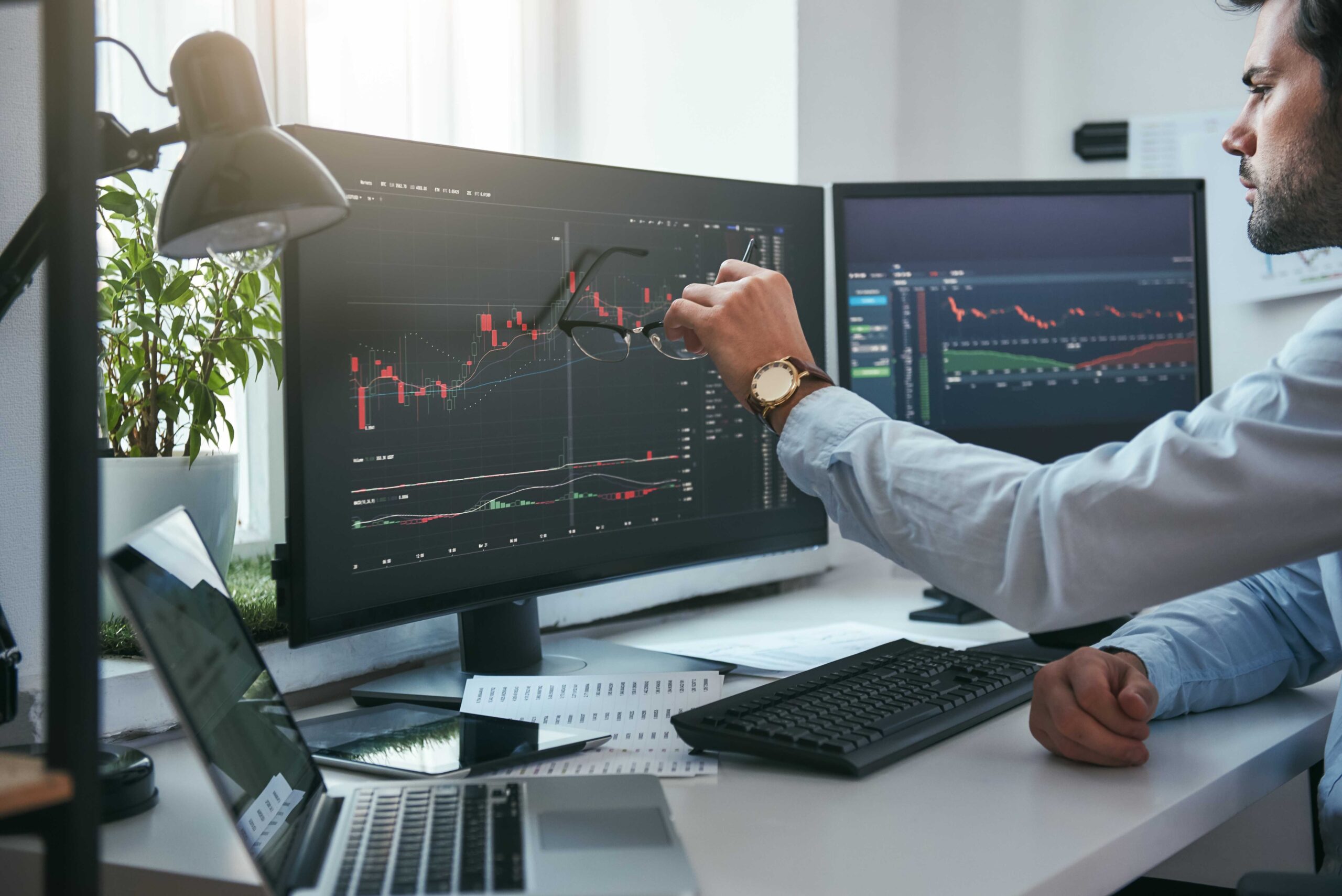If you’ve ever traveled abroad and exchanged your money for a different currency, you’ve already taken part in the foreign exchange market—just on a very small scale. Forex trading, short for “foreign exchange trading,” is the process of buying and selling currencies to make a profit. For beginners, the world of forex might look complex at first glance. But with the right foundation, learning to trade forex is much more approachable than it seems.
In this guide, we’ll walk you through how forex trading works, why it’s become one of the most popular financial markets globally, and the first steps to take if you’re just getting started. Whether you’re curious about investing or simply want to understand what drives the currency markets, this post is a practical starting point.
What is Forex Trading and Why Do People Invest in It?

Forex trading is the act of buying one currency while simultaneously selling another. These transactions happen in pairs—like EUR/USD or GBP/JPY—and are traded on a global, decentralized market that operates 24 hours a day, five days a week. According to the Bank for International Settlements, the daily trading volume in forex exceeds $6.6 trillion, making it the largest and most liquid financial market in the world.
People invest in forex for various reasons. For some, it’s a way to speculate on the movement of currencies and potentially profit from short-term price changes. For others—especially businesses and institutions—it’s about hedging against currency risk. Forex also attracts individual traders because of its low entry costs, round-the-clock access, and the ability to use leverage to control larger positions with relatively little capital.
If you’re new to the idea, forex trading for beginners may feel overwhelming. But once you understand the structure of the market and what moves it, it becomes much easier to follow.
Understanding How Forex Trading Works
To get a grip on how forex trading works, you need to first understand how currencies are priced. In the forex market, currencies are always traded in pairs. For example, when you see EUR/USD = 1.1000, it means one euro is worth 1.10 U.S. dollars. The first currency in the pair is the “base currency,” and the second is the “quote currency.”
Trades are typically measured in pips (the smallest price movement), and positions are taken in lots, which represent standardized contract sizes. Most brokers offer mini and micro lots so that traders can participate even with small accounts. The spread—the difference between the buying and selling price—is the broker’s profit on a trade.
Another important concept is leverage. This allows traders to open positions much larger than their account balance. For instance, with 50:1 leverage, you can control a $5,000 position with just $100. While leverage can increase your potential profit, it also amplifies your losses, which is why forex trading for beginners should always start with a clear understanding of the risks involved.
Key Steps to Start Trading Forex for Beginners

If you’re interested in how to trade forex trading for beginners, here’s a straightforward roadmap to get started:
- Step 1: Choose a Trusted Broker: Start by selecting a regulated forex broker. Look for platforms that are licensed by authorities like the FCA, CySEC, or ASIC. Make sure they offer a user-friendly interface, competitive spreads, and access to demo accounts.
- Step 2: Open and Verify Your Trading Account: Most brokers require you to provide identification and address documentation. This step is crucial for security and compliance purposes.
- Step 3: Fund Your Account: Once your account is verified, you can deposit funds using options like bank transfer, credit card, or e-wallets. Start with an amount you’re comfortable risking.
- Step 4: Choose a Trading Platform:Most brokers offer platforms like MetaTrader 4 or 5 (MT4/MT5). These platforms are standard in the industry and provide tools for charting, analysis, and automated trading.
- Step 5: Place Your First Trade (Preferably in a Demo Environment): Before jumping into live markets, spend time using a demo account to practice. Learn how to read currency charts, apply stop-loss and take-profit orders, and understand how the market reacts to economic news.
Taking these steps early on can help you build confidence. A solid start is one of the most important elements of long-term success when you’re learning to trade forex.
Learning to Trade Forex Strategically
Jumping into the forex market without a clear strategy is like sailing without a compass. While anyone can place a trade, learning to trade forex in a sustainable way requires planning, discipline, and a basic understanding of market behavior.
- Start with a Demo Account: Before risking real money, use a demo account to practice placing trades, setting up charts, and testing different strategies. Most brokers offer this feature for free.
- Explore Common Trading Styles: There are several approaches to forex trading. You might prefer scalping, which involves making dozens of quick trades throughout the day. Or maybe swing trading, where you hold positions for a few days, suits your lifestyle better. Each method comes with its own level of risk and time commitment.
- Use Technical and Fundamental Analysis: Technical analysis relies on reading price charts, indicators, and patterns. Fundamental analysis, on the other hand, focuses on economic data, central bank policy, and geopolitical news. Successful traders often combine both to make informed decisions.
- Practice Risk Management: No matter how confident you feel about a trade, use tools like stop-loss and take-profit orders to manage risk. Never risk more than a small percentage of your capital on a single trade. This habit will protect you from emotional decision-making and unexpected market moves.
Common Mistakes Beginners Should Avoid
If you’re serious about forex trading, knowing what not to do can be just as important as knowing what to do. Many beginners make similar mistakes that can be avoided with awareness and preparation.
- Skipping the Learning Phase: Some traders jump straight into live trading without understanding how forex trading works. This often leads to avoidable losses.
- Overusing Leverage: High leverage can tempt beginners into opening large positions without proper risk control. While it might magnify your gains, it can just as quickly wipe out your account.
- Revenge Trading: Trying to win back money after a loss by placing random trades is emotionally driven and rarely ends well. Focus on long-term discipline instead.
- Ignoring the News: Economic events like interest rate announcements or employment data can cause massive price swings. Even if you prefer technical analysis, it’s wise to keep an eye on the economic calendar.
- No Trading Plan: A well-structured trading plan outlines when to enter and exit trades, how much risk to take, and how to evaluate performance. Without it, you’re trading based on guesswork.
Essential Tool and Resources For Beginner Traders
When you’re starting out, having access to the right tools can make your forex trading guide much more practical and actionable.
- Economic Calendars: These show upcoming economic announcements and events that could impact currency prices. Most trading platforms include this feature.
- Charting Software: Trading platforms like MT4 or TradingView allow you to analyze market movements with technical indicators, drawing tools, and multiple timeframes.
- Forex Calculators: Use pip value, position size, and margin calculators to manage trades accurately and avoid surprises.
- Educational Blogs and Webinars: Look for broker-hosted webinars, YouTube channels, and blogs (like this one) that focus on forex trading for beginners. Avoid any content that promises “easy profits”—if it sounds too good to be true, it probably is.
- Trading Journals: Keep track of every trade you place, including the rationale behind it, the outcome, and what you learned. This is one of the most underrated habits among traders who go on to trade professionally.
Why Sasa Markets is a Great Place to Start
At Sasa Markets, we understand that getting started with forex can feel overwhelming. That’s why we’ve built a platform that makes it easier for beginners to take their first steps confidently.
- User-Friendly Interface: Simple, intuitive dashboard designed for new traders
- Regulated Broker: Trade with peace of mind under a licensed financial platform
- Educational Support: Access to regular webinars, tutorials, and a full forex trading guide
- Demo Account: Practice trading in a risk-free environment before going live
- Competitive Spreads & Leverage Options: Tools designed to maximize potential while keeping risk manageable
Whether you’re looking to trade full-time in the future or just explore the market, Sasa Markets provides the resources and support you need from day one.
Getting started with forex trading for beginners doesn’t require a finance degree or years of experience. It starts with curiosity, patience, and a commitment to continuous learning. Focus on building a solid foundation—understand how forex trading works, master one strategy at a time, and practice good risk management.
The road to becoming a confident trader is not linear. There will be wins, losses, and lessons. But with the right tools, community, and mindset, you can turn forex trading into a serious skill—and maybe even a new stream of income.
Ready to take the next step? Create your demo account with Sasa Markets and begin your journey into the forex world today.